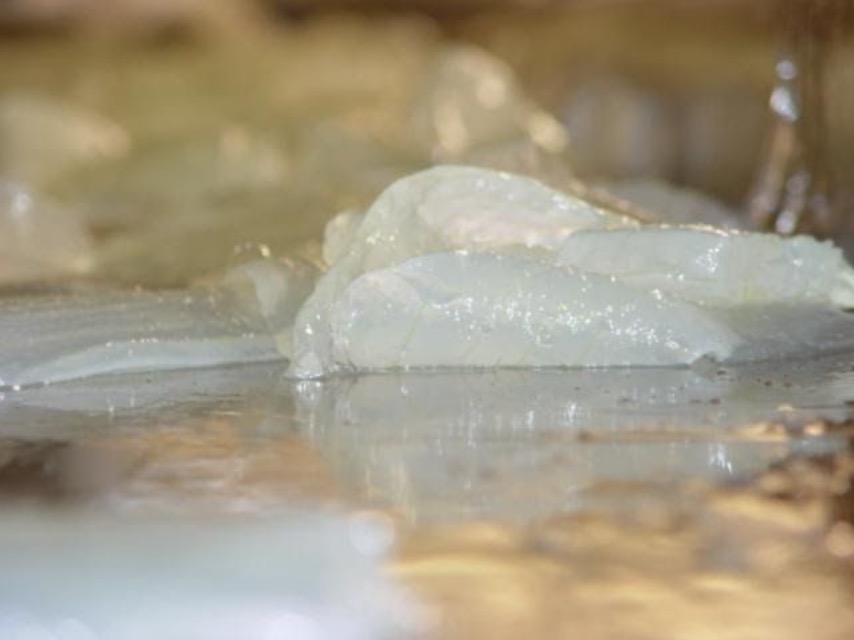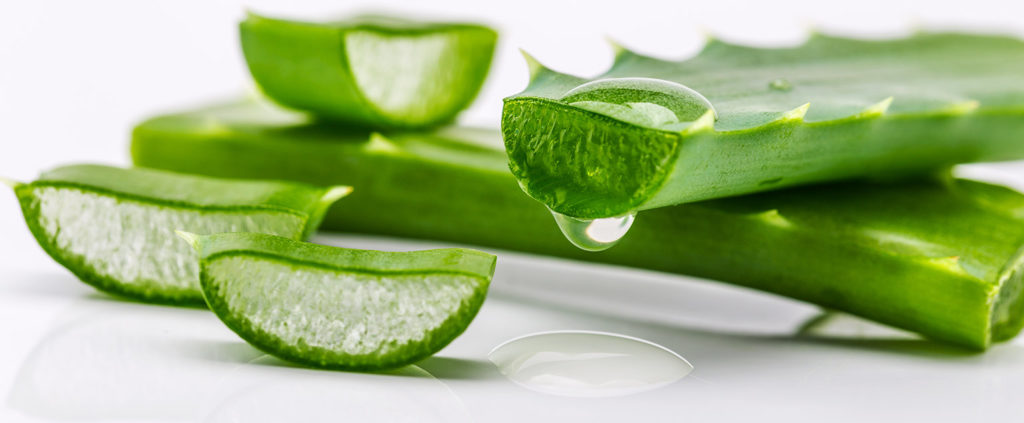Inner Leaf Juice

Inner Leaf Aloe Vera Juice is a way of processing aloe vera where the outside rind (skin) and thorns of an aloe leaf have been stripped away to reveal the gel-like fillet in the center from which we obtain the aloe liquid (juice).
This type of product has been called “Aloe Vera Gel”, “Aloe Vera Gel extract”, “Inner Gel”, “Inner Leaf” and “Hand Filleted” because not only is the juice derived exclusively from the inside of an aloe leaf but, traditionally, the method of skinning the leaf was done by hand and was very labor intensive.
While this method has been semi-automated, it can still be labor intensive for leaves to be handled and positioned for the cutting to take place as well as (at least for Aloe Laboratories, Inc.) for the skinned fillets to undergo a visual inspection of quality.
While the skinned inner fillet may have a gel-like appearance, it is more akin to a peeled orange. Once the fillet has been ground, the solid substance is revealed to be pulp (or fiber) and the crushing of this fiber releases the plant liquid we call juice and the result is a juice with pulp (just like a crushing a peeled orange would give you orange juice with pulp).

This can be confusing because when people ask for “Aloe Vera Gel” we have to ask if they are referring to juice made from the inside part of the leaf or are they referring to a thickened product.
If a product is being sold as an inner leaf aloe vera gel and it is a thick product then it has had a thickening ingredient added to it. Because the outside part (skin) of the aloe leaf is removed prior to processing, the resulting juice usually contains low or no amount of aloin (if decolorized).
Leaf Juice
Leaf Aloe Vera Juice is a way of processing aloe vera where both the outside rind (skin) and inner gel are ground together to make the resulting juice.

This type of product has also been called “Whole Leaf” because the juice is made from crushing the whole aloe leaf. This is not the entirety of the process, however, because the resulting mixture of this crushed aloe leaves would be very dark and contain bits of the outside rind which are very bitter.
The aloin content of a crushed/ground aloe leaf is extremely high making it unsuitable for consumption. To make this product suitable, first, a mechanical filtration step is included to remove the solid matter from the product though it still leaves a dark liquid and the high aloin level remains.
Therefore, a decolorizing step is also taken which removes both the color and the aloin which does make the product suitable for consumption.
Note: Aloe Vera and Cancer
A few years ago, the National Toxicology Program (NTP) issued a report that aloe vera was found to be carcinogenic in laboratory rats which, of course, worried the industry.
The International Aloe Science Council (IASC) and the FDA met and it was found that the sample used in the NTP’s test was provided from somewhere outside the United States and contained extremely high levels of aloin (a substance found in the veins of an aloe leaf just under the skin but outside the inner fillet).
It was determined that the sample was an unfiltered whole leaf aloe liquid (such as found on the left or middle in the above picture) which is totally unsuitable for consumption. The IASC indicated that the test sample was not representative of most aloe products on the market (at least those member companies that are part of the IASC) because of the decolorization process that removes the aloin.
The FDA commented that the products should not be called “whole leaf” if parts are filtered out which is why IASC members (which includes Aloe Laboratories) followed the suggestion and renamed the product “Leaf” juice to differentiate it from whole leaf to indicate it has been decolorized and is a product suitable for consumption.
California Proposition 65 regulation makes this clear when they state the following:
The California Environmental Protection Agency’s Office of Environmental Health Hazard Assessment (OEHHA) lists Aloe vera, whole leaf extract as a chemical known to the state to cause cancer. OEHHA further explains that Aloe vera, whole leaf extract is not the same as Aloe vera decolorized whole leaf extract, Aloe vera gel, Aloe vera gel extract, or Aloe vera latex. (bold/underline added)
Looking for your Aloe Vera?
If so, you have come to the right place. At Aloe Labs, we have cultivated more than 150 acres of aloe vera, because we believe in the many benefits that this plant has to offer.
Want to take a look at the products we have available? You can do so by browsing our store. Have any questions? If so, you can give us a call at 956-428-8416 or email us at [email protected] or fill out the Contact Us page on our website.

